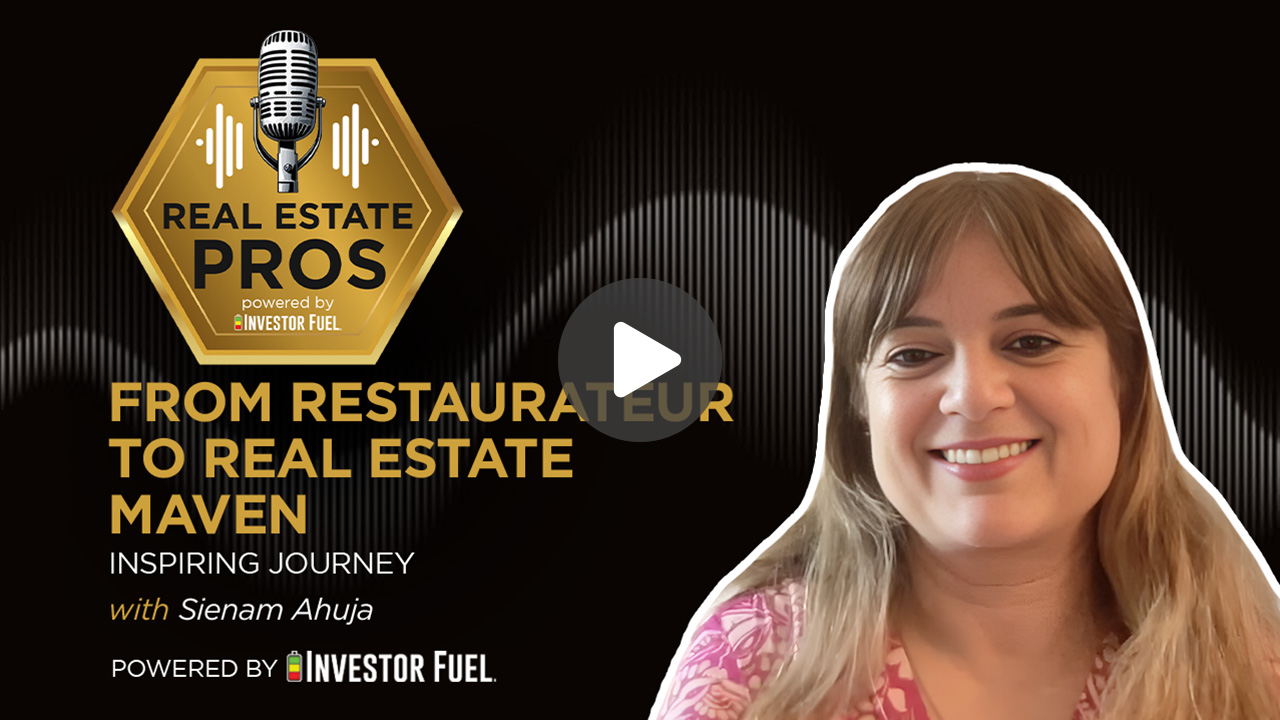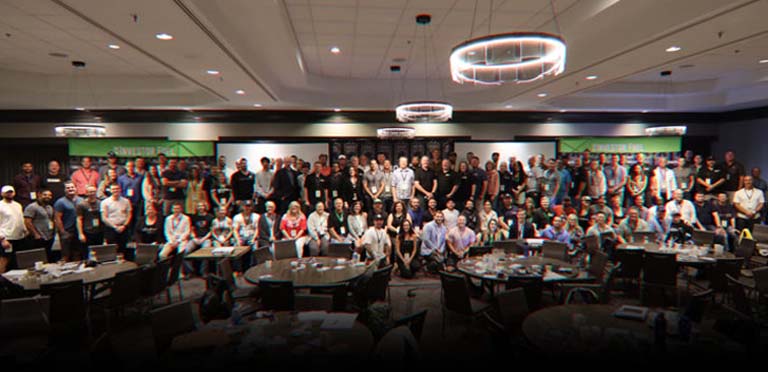
Show Summary
In this episode of the Real Estate Pros podcast, host Michael Stansbury interviews Sienam Ahuja, who shares her unique journey from the restaurant industry to real estate and the development of her AI-driven company, Bryckel AI. Sienam discusses her early experiences in New York City real estate, the challenges she faced, and how her background in restaurants shaped her approach to business. She highlights the contrasting real estate markets in the US and India, particularly in the wake of the pandemic, and explains how Bryckel aims to streamline complex real estate transactions using AI technology. The conversation concludes with insights into the future of Bryckel and its target market.
Resources and Links from this show:
Listen to the Audio Version of this Episode
Investor Fuel Show Transcript:
Michael Stansbury (00:00.569)
Hello everybody and welcome to the Real Estate Pros podcast. I’m Mike Stansbury and with me is Sienam Ahuja. Sienam, how are you today?
Sienam Ahuja (00:12.856)
Good Mike, thanks for having me.
Michael Stansbury (00:14.823)
Well, thank you for being on here, but first we gotta talk to our audience about Investor Fuel. Guys, at Investor Fuel, we help real estate investors, service providers, and real estate entrepreneurs two to five X their businesses to allow them to build the businesses they’ve always wanted and allow them to live the lives they’ve always dreamed of. Sienam, let me ask you this. Before we get into what you’re doing in real estate now in AI, super interesting stuff. I wanna hear all about it, but what is your origin story in real estate?
Tell me about how did you even get into this or walk the path of the yellow brick road, which we call real estate. What’s that all about?
Sienam Ahuja (01:00.204)
New York City. And again, it’ll sound very cliched, but it was close on my back and a fistful of dollars. And I started working and I actually fell in real estate when I bought my first condo in New York City. So it was one of those buildings where the sponsor was doing over the building. And honestly, I never did any financial modeling or anything. The price looked amazing. Went ahead and bought it. And in two years, it doubled in value. And it’s never happened since then in New York.
It was that time that it happened and while I love New York, the one thing that I missed was the food from India. And actually it’s very unique because it’s Chinese food the way we make it in India.
Sienam Ahuja (02:00.076)
that condo to kickstart my business. If it literally had I not been able to double the money on it, I would never have been able to borrow and start my journey as an entrepreneur.
Michael Stansbury (02:11.461)
Okay, I love it. So you’re in the restaurant business. us, give us a little brief history about that and when you pivoted to real estate and what you’re doing now.
Sienam Ahuja (02:30.118)
No advertising, no one’s walking in. So, but I grinded through for about three months and you know, through the grind, what we were just doing is constantly taking the feedback of the few people that were coming to eat and improve, improve, improve. And then one day again, I think this is just luck and God, would say, unbeknownst to me, New York Times gives us a middle spread on a Wednesday and three stars. So I am walking to the restaurant,
.
Michael Stansbury (03:08.723)
Alright.
Michael Stansbury (03:29.735)
Wow, did they give you any instance that they were coming or was this just like surprise?
Sienam Ahuja (03:34.154)
No, no, it’s all done anonymously. New York Times is not one of those places where you sort of, you know, pay to play. They just showed up a few times, they ate the food, they critiqued it, and they decided we deserve the three stars. And so that was the turning point. had celebrities like Sarah Jessica Parker coming, Bollywood celebrities coming when they would come to New York. And so it just took off from there. And then we had restaurants across same concept, New York, New Jersey, Massachusetts, Connecticut,
It was a strong decade of doing it, but then I wanted to have kids. And when I decided that I wanted to spend more time with them, I figured it was the right time to sell the business while it was still on a high. So I sold the business and because I love real estate, I said if I was to do something today where I had no employees, like I did not want to deal with the whole 500 employee situation, what is that going to be? And I decided to become a broker.
that’s when I pivoted to real estate and I because I think I’ve been in the city for so long and I loved it. I very quickly became the top producing broker. And I totally enjoyed it, but I also happened to be the trailing spouse to my husband who was in commercial real estate. And he was then moved back to India because of his company wanting to build the US India corridor business. So I ended back there. I was extremely lost. But again, real estate came to the rescue. I got hired by WeWork to head enterprise sales. And so I did that in India, had a
blast, you know, working with lots of large enterprises, Microsoft, Amazon, Disney, I can’t even remember how many of them. And then the pandemic happened and his company wanted him back in the US because now they wanted to be closer to the clients. So then we come back to California and that was ChadGPD 2.0.
Sienam Ahuja (05:38.504)
And ding, ding, ding, the bells went off in my head that one of the biggest challenges we have in real estate, it doesn’t matter residential or commercial, is that we are always tackling very complex documents, whether we are buying a place or we are leasing a place or we are getting the loans. And it takes months. It takes a lot of money because you have to bring in the brokers to read it and give opinion and the lawyers to come in and the back and forth. And I said, there’s got to be a way using AI to solve this.
And so Bryckel was born to deliver real estate document intelligence with legal gate precision.
Michael Stansbury (06:16.047)
Okay, I love this. So each turning point in your career, you saw an irritation in the marketplace and you’re providing a solution. There’s no Indian restaurants in New York that kind of fit my palette. I think my palette is not unique to me. So I’m going to create this restaurant, right? And then, you know, the other thing is, is I get at restaurants, I’ve worked at restaurants. I think every human being should work in a restaurant.
Sienam Ahuja (06:29.262)
you
Michael Stansbury (06:43.571)
providing service at that level, at that eye to eye level, and learning to do that, I think you can’t learn, I think that is an unlearnable skill unless it’s in a restaurant. But it’s also a grind, because I assume as a restaurateur, you were there a lot, Always, every day. And that’s the way a great restaurateur operates. But then you’ve pivoted, because hey, a family, you know, a family, growing a family is complex.
Sienam Ahuja (07:00.641)
Always, every day.
Michael Stansbury (07:12.459)
And one of the complexities is time and you don’t get a lot of time if you’re at a restaurant from, you know, from opening the clothes. And so you pivoted because of that and sold that and then went into real estate because you didn’t want the, you know, the, the amount of employee interaction that you had at the restaurant. I, and I totally get that as well. So now here we are today. Tell us about Bryckel AI. no, actually I want to pivot here because this was in the back of my mind.
So how was it coming here to New York and then going to India in your time as an immigrant coming to New York and then going back, how is India different? How is the landscape or maybe the political landscape district or how is the business different between, you you come in here and maybe you living there for a period of time after you’ve lived in the United States so long?
Sienam Ahuja (08:06.638)
It’s very interesting. It’s literally a story of two parallels. So over here, for instance, we’re, you
the office market never recovered, especially after the pandemic, right? And we are constantly hearing this conversation about work from home and you want to get bigger homes because now you want to have a home office, you’re working from there. And meanwhile, the offices are shrinking. So the large developers now have to worry about their debt covenants because no one’s coming back. On the other side of the world in India, because there is such a huge young population that has entered the workforce and because they are so
technically strong, the economy is exploding, the office market is exploding, and as a result the residential market is exploding. So in fact the problem over there is that the infrastructure cannot move as fast as the economy and real estate is growing. So it was very fascinating to go back and see how
there is like these two tails going on at the same time. I mean, in fact, even as we work, we did exceptionally well over there in contrast to here in the US because companies constantly wanted more and more space for their employees.
And as a result of that, because there are so many jobs and they’re growing even faster today than, you know, when I was there, there is a booming demand for all the consumer goods. So a lot of people have this perception about India. You see the traditional brochures with the elephants and the snake charmers. The India of today does not look or act like that at all. It is obscenely wealthy. Of course, there is disparities. There is still a significant population that doesn’t have access to even
Sienam Ahuja (09:55.516)
basic wages but the top and the middle is obscenely affluent today. Wants to spend money on anything that they can lay their hands on from experiential vacations to the latest iPhones. So it’s very interesting how things are operating there.
Michael Stansbury (10:10.555)
Yes. So I, I’ll be honest with you. One of the things that I was, I have not, not been exposed to is, is in America, we, we, you we have, grow up and we have these cultural ideas about what goes on in the country. And then, you know, when you’re interested in you dive deep into, you know, Bollywood and India, you realize, there’s a, there’s a thriving, economy over there. And
Yeah, they may have taken something they that you know, there’s just parallels between that in the United States It’s not what we think it is and that’s why it’s so important to travel and they go to places and they’re really find out what’s going on so it’s history. You said your husband was in commercial real estate So he see I bet he sees the difference between office space here in America and over there. It’s like it’s a dichotomy How’s he been able to navigate? You know the different, you know
post COVID era in commercial real estate, what does that look like for him?
Michael Stansbury (12:09.115)
Right. Yeah, that’s very, very interesting. And let’s, let’s, let’s dive deep into AI. I’ve been using it ever since it came out when I, when it was usable. I started with chat TBT still have an account. I’ve been using, the platform on X grok. those have been my two main ones. I’ve dabbled on the other ones, but let’s talk about Bryckel and specific to real estate and tell me, you know, what problem does it solve and, where, where, where are we at currently?
And where is it going?
Michael Stansbury (15:20.007)
I like it. So who is the avatar for the customer right now? Like even though I heard you describe it and I kind of know, but if you were to, to tell me like who is specifically the scene I’m want to help right now, like what are the, what’s the avatar look like?
Michael Stansbury (16:04.229)
Okay, so tell me, when did we start, how are we doing now, what does Bryckel look like today, and what are your projections, how are you getting out in the marketplace right now? that, so this is what I love about somebody that’s in this tech space that’s been in real estate and been in restaurant. I know you have an engine and I know that this thing’s gonna go, but tell me, what do those things look like today?
Michael Stansbury (18:21.009)
That’s what I was, that’s great. So you found somebody that is the mouthpiece and it’s not you. That’s how I love when you solve a problem for somebody and they say, Hey, I’m using this. It’s great. And you need to use it too. And, but those, those different folks, they need something more robust, but when they get into it, again, you’re solving the problem of time and you’re trying to ease and, communicating, communicating through all with all parties. And I’m sure just like every, GPT, I’ve watched this in real time. The Google, the VO, all the video and stuff, they just keep getting better and better, exponentially faster and faster. Is that what you expect Bryckel to do as well?
Michael Stansbury (20:01.735)
Right, I like that.
Michael Stansbury (20:08.53)
Okay, well Sienam, tell people where they can find more about you and about Brickle and all the things that you guys are doing. Where are you on the internet?
Michael Stansbury (20:24.307)
Okay, awesome. Well, Sienam, thank you for being on the Real Estate Pros podcast. Folks, all that information will be in the show notes below. So feel free to reach out, especially if you’re in that commercial real estate space. This sounds exciting. AI, if you follow the news at all, sometimes it’s a fire hose of things coming at you. So it’s really cool that somebody’s going specifically and drilling down in our space, in the real estate space. So at least check it out, see if it’s right for you. And with that being said, folks,
Watch, excuse me, like and subscribe, do all the thing the influencers tell us to do, and we’ll see you next time. Thank you, Sienam again, for being on the show.







